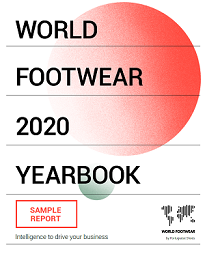Register to continue reading for free
Textile footwear represents one third of all traded footwear

The steep increase in the importance of textile footwear has been a remarkable feature of the evolution of international footwear trade over the last decade. Read all about it in the World Footwear 2020 Yearbook launched by APICCAPS
It is the tenth edition of a report that analyses the most important trends within the worldwide footwear industry. Data for 2019, both in quantity and value, is available, making it possible to position the main players with regards to production, consumption, exports and imports. The publication is divided in two parts. A first chapter with a deep analysis of the World Footwear industry in 2019, with special focus on the sector's leading global players, and a second part with a detailed analysis of 84 different markets.
Textile Footwear
The steep increase in the importance of textile footwear has been the most remarkable feature of the evolution of international footwear trade over the last decade. Textile footwear now represents roughly one third of all footwear trade, up from 14.6% in 2010 (value). Both rubber & plastic and leather footwear lost share to textile. Nonetheless, rubber & plastic footwear still represents almost half (47.5%) of the volume of all footwear exported worldwide and leather footwear represents 38.8% of its value.
The contrast between the different types of footwear is even more vivid when the evolution of exports is measured in absolute terms, not in market share. Since 2010 the number of pairs exported fell slightly for rubber & plastic (-1.7%) and leather (-8.1%) but increased by 80% for textile footwear.











